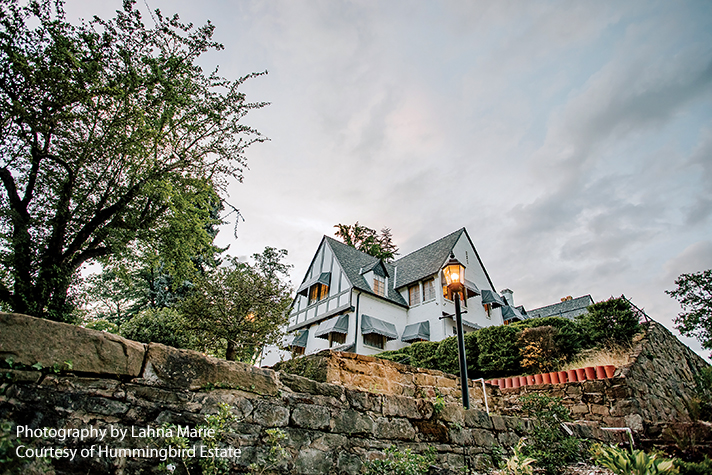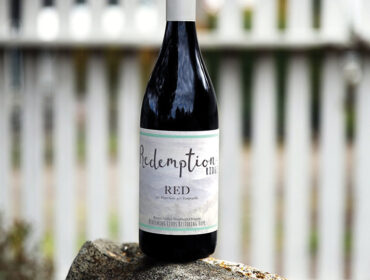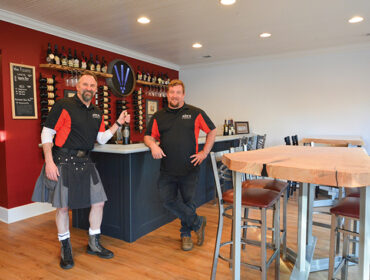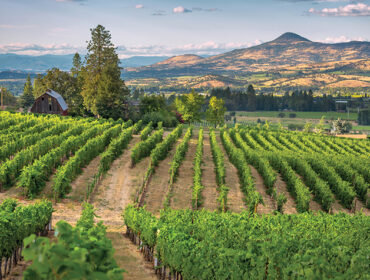
Hummingbird Estate: A Place Like No Other – by MJ Daspit
LAST SEPTEMBER MARKED THE OPENING OF HUMMINGBIRD ESTATE, the Rogue Valley’s most remarkable wine destination, unique by way of being among the newest and oldest. While the brand marks its first estate release with the 2019 vintage, the heritage site with its set piece estate house, dates from the 1920’s. Lovingly and meticulously restored, it invites you to take a step back in time—with a glass of fine wine in hand.
For over 60 years, the 47-acre site on Old Stage Road just a couple of miles outside Jacksonville was the home of Alfred SV Carpenter, known as Alf, and his wife Helen whom he met while on a world cruise and married in Cairo, Egypt in 1922. Helen was the daughter of Harlow E. Bundy whose Bundy Manufacturing Company, founded with his brother Willard in 1889, would morph into the Computing-Tabulating-Recording Company in 1911, which in turn became International Business Machines (IBM) in 1924.
Alf and Helen lived in Pasadena, California for five years before coming to Southern Oregon where Alf had operated Veritas Orchard with his brother Leonard during the Rogue Valley Orchard boom. Besides operating the orchard, Alf would help found Southern Oregon Sales (SOS) a fruit packing cooperative. The SOS warehouse still stands at Stewart Avenue and Route 99 in Medford.
In 1926-7 Alf and Helen built a large Rogue Valley home that they called “Topsides.” Surrounded by pear orchards at the end of a serpentine drive lined with locust trees, the gracious English Cottage-style home designed by Medford architect Louis B. Humphreys is notable both as a structure of historic importance and for the role it played in the development of the Rogue Valley as the locus for events the Carpenters hosted to support their many charitable interests.
The Carpenters began their career as social benefactors during World War II when they established the Jackson County Recreation Committee to see to the well-being of soldiers stationed at Fort White. The Recreation Committee would become the Carpenter Foundation through which the Carpenters would provide financial support to Medford’s Community Hospital, later Rogue Valley Medical Center, the local Red Cross, the Oregon Shakespeare Festival (OSF), the Britt Music Festival and the Craterian Performing Arts Center. It’s actually true that ivy cuttings from Topsides were planted to adorn the walls around OSF’s Elizabethan Theater. Today the Carpenter Foundation continues as a mainstay of Southern Oregon arts, health and community organizations.
Because of its architectural and social significance, the Carpenter house was listed on the National Register of Historic Places in 2005. The property was acquired in 2017 by Ed and Susan Walk, Midwestern farmers whose daughter Kristina had married a Rogue Valley native, Tim Alvarez. Kristina and Tim met at Southeast Missouri State University. “Tim was majoring in baseball,” Kristina says. “We were married when I was barely 20 in my junior year and he was drafted by the San Francisco Giants.” After several years in the minor leagues, Tim retired from baseball and—much like Alf Carpenter—opted to return to Southern Oregon.
After Tim and Kristina moved back to the Rogue Valley and Tim joined his father’s business, Claudio Alvarez Construction, Kristina’s parents decided to find a property in Oregon that would allow them to spend part of their time near their daughter and her family.
Owner of a thousand acres in Illinois, Ed needed space to call his own as well as a property that would keep him busy. “He felt that if there’s not three or four hours of work every day I’m bored,” Kristina explains. Once a realtor showed him the old Carpenter place and he sat down on the patio to gaze out across the terraced landscape designed by Charles Howard Voorhies, “He said, “here.” He loved the view and the climate and saw three or four hours of work to do every day for the rest of his life.” She laughs, probably because the task of restoring the property and starting a vineyard would far exceed that.
The restoration aimed at preserving what was going on inside, Kristina continues. “Is why it was such a long process.” Pulling up carpet uncovered unique period flooring such as Zenitherm, a stone alternative made of cornstalks. When mirrors were removed from one wall in the downstairs sitting room a fireplace was revealed, set in the original Stone-Tile, an exterior and interior wall block manufactured by the Medford Concrete Construction Company. There are eight fireplaces throughout the home, each one decorated differently with a sculpted metal or tile surround or an ornate hood. The English Cottage-style with Tudor Revival detailing has been preserved throughout, with its whitewashed masonry walls, unpainted lintels (blocks over the doors), beam and plaster or coffered ceilings, wood-paneling and leaded glass windows. Walking through the house you are transported to another time altogether, when you summoned a servant by pressing a discreet button on the wall behind the door. Your lunch might be waiting for you in the pass-through refrigerator, several dishes deposited by the help from the butler’s pantry side for you to remove by way of the doors on the dining room side.
The interior restoration includes five bedroom suites on the second floor that are now available for overnight stays. Named for the view from the window, each suite is different in size and feel, but all have the characteristic built-in cabinetry, sitting space, and commodious ensuite bathrooms. You have only to look at the sparkling white “HE” monogrammed robes waiting to enfold you to feel that comfort goes hand in hand with the historical appointments. “It’s amazing but it’s not imposing,” Kristina says, summing it up perfectly: “This style is, take a seat, relax …”
Now that the vineyard has matured—the first estate vintage, a Rosé of Pinot Noir, will be released in February 2020—and the restoration of the mansion is essentially complete, what will Ed Walk do to keep himself busy going forward? Kristina ticks off a number of future plans. “We put in a wiffle ball field down on the flat where Dad wants to have wiffle ball tournaments. There’s an area in a draw that might be suitable for peach trees and ten more acres in the back for vineyard expansion. With the big open spaces and all the shade, I think we’ll have a lot of people picnicking. That’s my favorite thing right now, that ‘picnic basket’ feel on a Sunday afternoon.”
One thing is safe to say: Hummingbird Estate’s future stands secure on this lovingly maintained foundation. For many years to come, Hummingbird Estate will continue to be that place like no other.
©Southern Oregon Wine Scene – from the Spring 2020 issue
Related Post
RoxyAnn Winery–Making a Difference with Redemption...
Update to this article on 07/29/21 – “… the Board of Directors of Redemption Ridge have made the difficult decision to clo...
Awen Winecraft: An Inspirational New Reason...
As if you needed another reason to visit historic Jacksonville, now there’s another draw—Awen Winecraft’s new tasting room located at ...
Rogue Valley Rising – by Valerie...
MEDFORD, OREGON’S star is rising on the world stage as it rapidly becomes a top destination for connoisseurs of fine wine and for enthusia...




